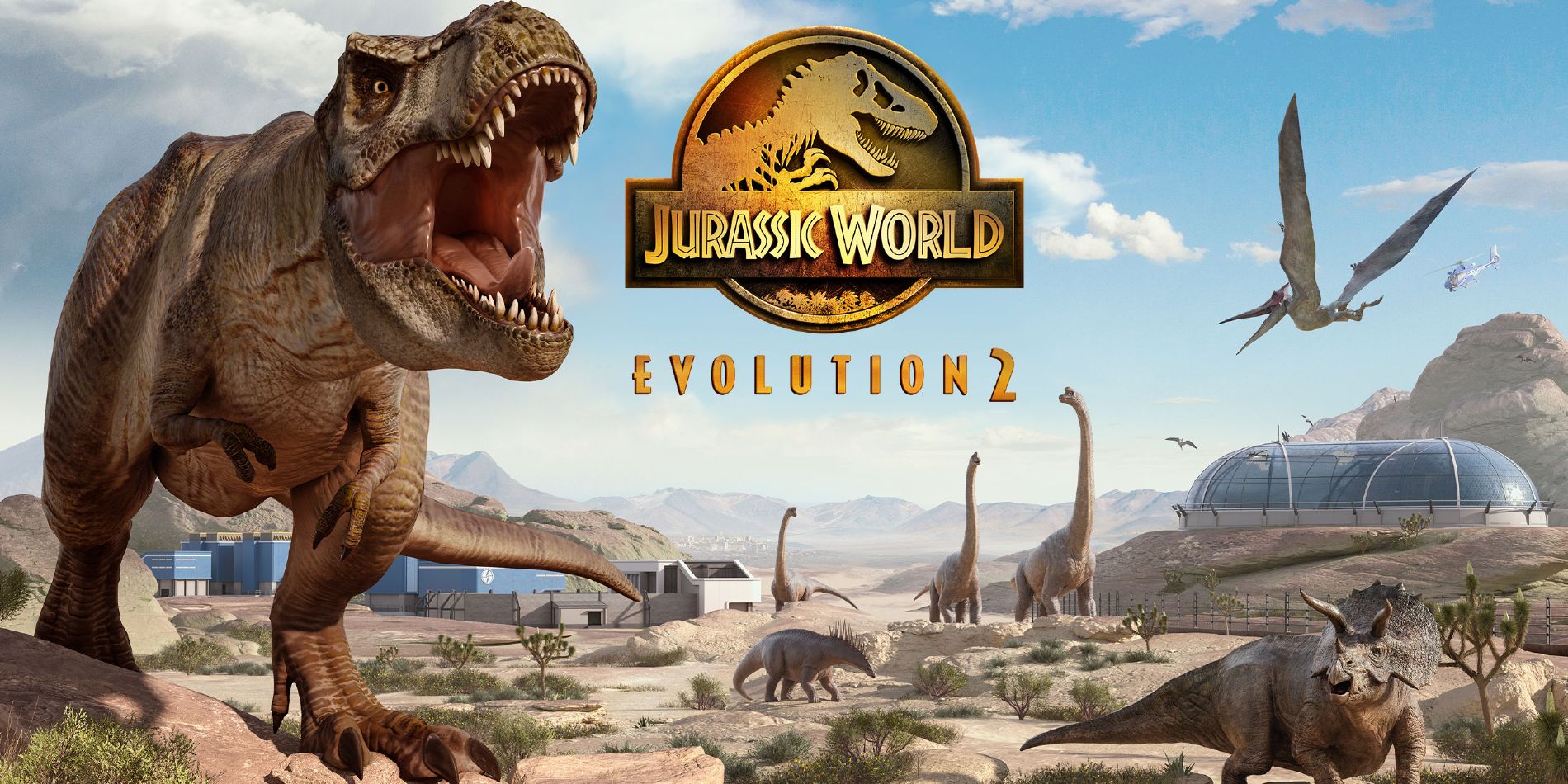Returning with plenty of dinosaurs, is there enough new tricks in Jurassic World Evolution 2 to better the original? The Finger Guns review.
There’s nothing quite like the feeling of seeing a T-Rex emerging from the depths of a containment facility. Witnessing the sheer scale of the beast and absorbing its deafening roar of power. As a kid watching the Jurassic Park movies, the sense of dread from seeing the prehistoric beasts looming over the helpless Jeff Goldblum in the pouring rain, with the tension the director captured, it was spellbinding to my naive eyes. Dinosaurs are one of nature’s most interesting and visceral creations, with so much potential for media to capitalise upon.
Fittingly then, when the original Jurassic World Evolution released in 2017, I jumped at the opportunity to live out my dinosaur wonderland fantasy. I played dozens of hours of it, completing every scenario and plugging away to achieve all of those 5* scores, even eventually nabbing the platinum trophy which still sits proudly in my account. It was an excellent game, with good mechanical foundations, a wealth of dinosaurs to unleash and an addictive gameplay loop causing many a night of deprived sleep.
So, coming into the sequel, the question really becomes how much the series can evolve into something greater than the original? The recent movies certainly didn’t achieve it and the relatively comprehensive nature of the first game would suggest the devs had a tough task to meaningfully improve or elevate the formula. Alas, having sunk in a good chunk of my life in the past week playing it, I couldn’t be more happy to report that Evolution 2 captures that same sense of wonder and enjoyment, albeit with some caveats. It lives up to the name of evolution rather than revolution, which for me proves just fine.
Dinosaurs and Man
Much like Jurassic World Evolution, the focus for the sequel is very much on the now-not-so-extinct reptiles. The previous roster is all here and accounted for, with variations of herbivores like the spritely Gallimimus or imposing Brachiosaurus, all the way to the iconic T-Rex, movie-jackass-ending Dilophosaurus and even the genetically mutated hybrid Indominus Rex. Given these were all available in Evolution 2’s predecessor, it’s fortunate that the sequel introduces some new creatures into the mix to spice things up.
The most significant inclusions are lagoon dinos like the Mosasaurus, spectacularly introduced in Jurassic World movies, as well as the new avary options such as the Pteranodon. The new additions bring the total roster up to 84 species, complemented with new animations, behaviours, feeding needs and hazards to account for. Having these new varieties is the primary reason for Evolution 2 and they’re good additions, but after such a long time between the titles I had hoped to see a little more.
Strangely, Jurassic World Evolution 2 doesn’t really introduce nor focus on the added reptilians during the main campaign (more on that later) and require a lot of work to reach the point of having access to them. They’re worth the wait eventually, but it seems an odd decision to have them so locked behind progress, especially for the lagoon variations. Finally getting to witness my Mosasaurus soar out of the water to devour a shark suspended high above was a sight to behold and never got old though, luckily.
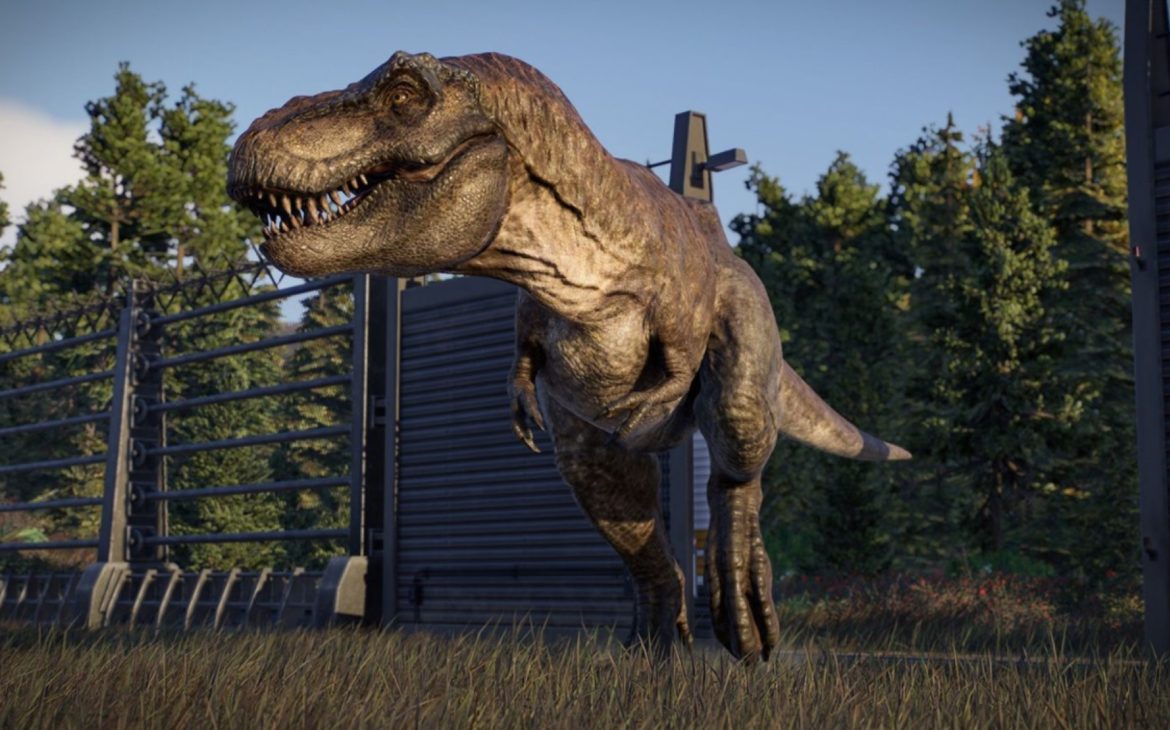
We Spared No Expense
Simply admiring your dinosaurs will however – sadistically or accidentally – lead to them getting restless, escaping captivity and ultimately turning your burgeoning park visitors into prime sacks of eviscerated meat. Jurassic World Evolution is after all, a management sim, where you are wholly responsible for ensuring that your newly-founded park is safe, efficient and well, fun for people to visit.
The core gameplay loop of establishing various structures to house, manage, replenish and medically care for your dinos is largely unchanged from the original. You’ll still be utilising response and medical teams, building enclosures with hatcheries and setting up attractions or viewing platforms for your guests to appreciate. There’s been some minor additions to your options with the structures you can develop and how they’re managed, but this is mainly applied to guest and amenity buildings. The basics of looking after your actual dinosaurs is left virtually unchanged.
As you progress through different scenarios, you’ll have the opportunity to do research which opens up improved structures, upgrade trees, new attractions, a monorail transport system and a lot more. Time and money are precious, with most scenarios requiring you to be pretty efficient with how you apply your resources. You can only hire a limited number of scientists who specialise in welfare, logistics and genetics, so deciding between doing expeditions for new dinosaur DNA, conducting fossil analysis, synthesising new beasts or looking after sick and injured creatures becomes a delicate balancing act. It works well at preventing you from becoming too successful too rapidly and forces you to prioritise, especially at the start of missions.
You’ll also need to contend with managing finances – dinosaurs are super expensive to resurrect from extinction, as it turns out. Keeping your park open means having the most spectacular dinosaurs who don’t come cheap, and every action, whether synthesising, incubating, healing or housing them costs money. You’re frequently required to micro-manage amenity buildings to maximise profits and ensure your placement of buildings is on the mark too, less you’ll end up with a debt-increasing facility instead of a successful one.
The management elements work well and had me constantly assessing for new lines of progress to develop my extravagantly created parks, but it’s not all perfect. More “difficult” scenarios effectively make it a slog to reach 5 stars to complete them, whereby you’ll be sitting around waiting for finance to get better varieties of dinosaurs. Meanwhile, having to constantly micro-manage response teams to repair essential structures like powerplants or fences gets annoying after the umpteenth storm has ruptured it all.
Creating your ideal vision of Jurassic Park is absolutely fun and has the right amount of stressful decision-making, but some of the completion requirements just dulled the enjoyment and showed how the system could have been streamlined a bit more effectively.

You Asked For More Teeth
Just like in the original, throughout your time developing your parks you’ll have various crises to contend with. The aforementioned storms will descend, leaving trails of destroyed structures in its wake. Dinosaurs will become disgruntled and break free, snapping up anything they can sink their teeth into. Gates can be sabotaged by activists seeking freedom for the dinos and disease can rip through your populations of expensive organic attractions.
Sadly, there wasn’t much new that was introduced here either, with most of the threats being reused from the original, which gave the title an air of repetitiveness. For the most part, I could rely quite easily on muscle memory from Evolution 1 to get me through with success. I’m in two minds about this – obviously a sequel should feel familiar and have a similar aura to its original source material, which this absolutely does, but it also felt at times like I was playing a slightly bigger version of the same game.
The new lagoon and avary structures also function identically to other enclosures, so while they look unique and interesting, mechanically the interest dwindles pretty quick as there’s nothing new to really contend with. While they may have different feeders or require new thinking regarding placement, they’re just pre-designed areas that act the same as fences. Given I adored Evolution 1, none of this was an issue for me and it just gave me more options for the same mechanics I already enjoy, but I did wonder to myself about whether it justified a sequel versus a smaller expansion.
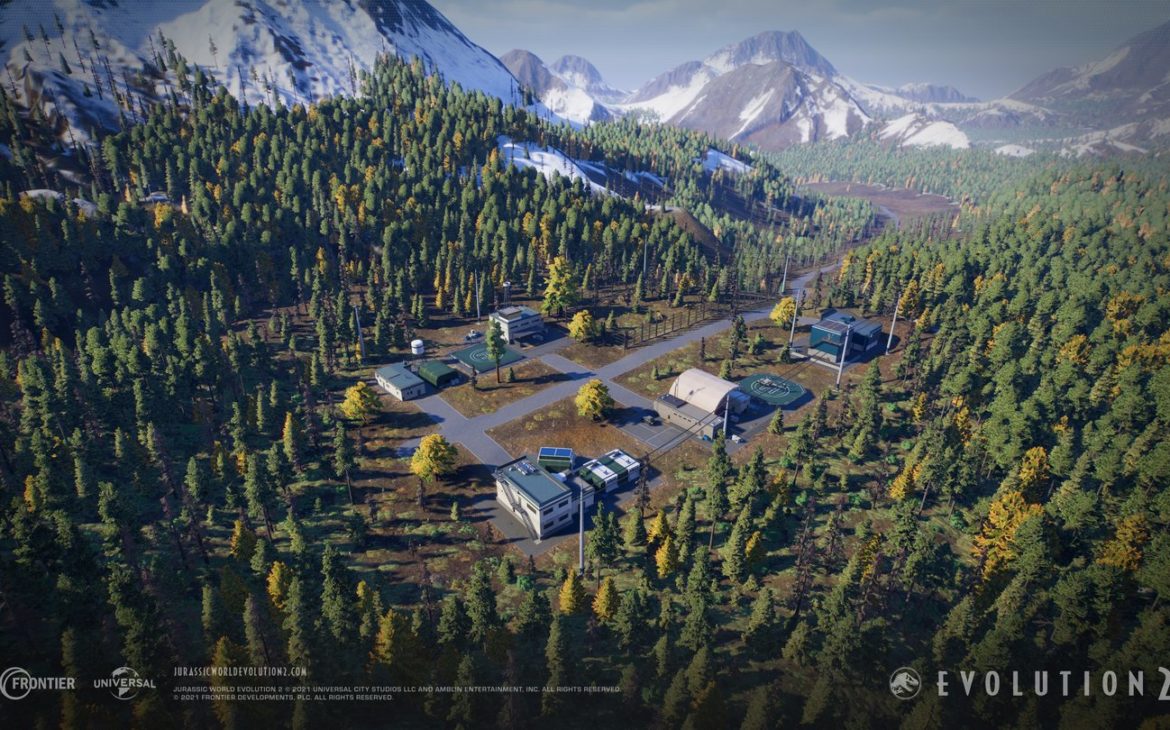
This Is How You Make Dinosaurs?
Jurassic World Evolution 2 arrives with a suite of modes, including an all-new campaign, Chaos Theory scenario missions, a fully-fledged sandbox mode and 5 challenge maps. Let’s start with the campaign: it’s bare-bones. Working as the Department of Fish and Wildlife, you’re tasked over 5 levels with securing escaped dinosaurs following the events of Jurassic World: Fallen Kingdom. While promising to be compelling, it’s anything but, serving as a glorified tutorial which doesn’t even cover the majority of core mechanics.
Jeff Goldblum and Bryce Dallas Howard return to take up their in-universe roles, Ian Malcolm of course having the most interesting lines, but the actual story is just painfully basic. The levels are decent and it does somewhat introduce the new avary varieties, which is nice.
Chaos Theory scenarios are comprised of missions dedicated to the movies – one from each of the older and newer entries. Returning to build an actually secure Jurassic Park or establishing Jurassic World with some safety checks. Recreating these iconic places is one of the best elements of Evolution 2 and depending on which era your working on, the options for buildings, dinosaurs and various aesthetics will be different. They’re much more engaging with the campaign, with all of the research options available and more challenge to adequately get stuck into. I spent 11 hours on one chaos theory map to get it to 5*, compared to the campaign which took me 3-4 hours which should give you some perspective on the difference in quality.
Challenges are completed in sequence and each has 4 difficulty options as well as a par time to aim for, providing some replayability value. The demands aren’t too strenuous until you hit Jurassic difficulty, but again they’ll boil down to making a large and successful park with modifiers that affect scientist research time and the like. They’re a decent addition and worth taking on. Sandbox mode returns which allows you to give yourself unlimited resources or add additional challenge to your experience if you wish. Structures, dinosaurs and attractions only become available in sandbox after researching or acquiring them in the other levels, so it’s more of a celebration for the work you’ve put in within the other modes. Nothing beats having unlimited money and setting all threats to nill to give you a zen-like experience as you craft the most monumental dinosaur landscape.
While the modes vary in quality and challenge, there’s still a huge amount of potential time investment, especially if you want to 5* and unlock everything. Speeding through you can see it all within 10 hours, but if like me you’re partial to being completionist, you could be looking at anywhere between 20-50 hours and beyond. I thoroughly loved the content offering, with the campaign being the only one I’d have happily skipped out.
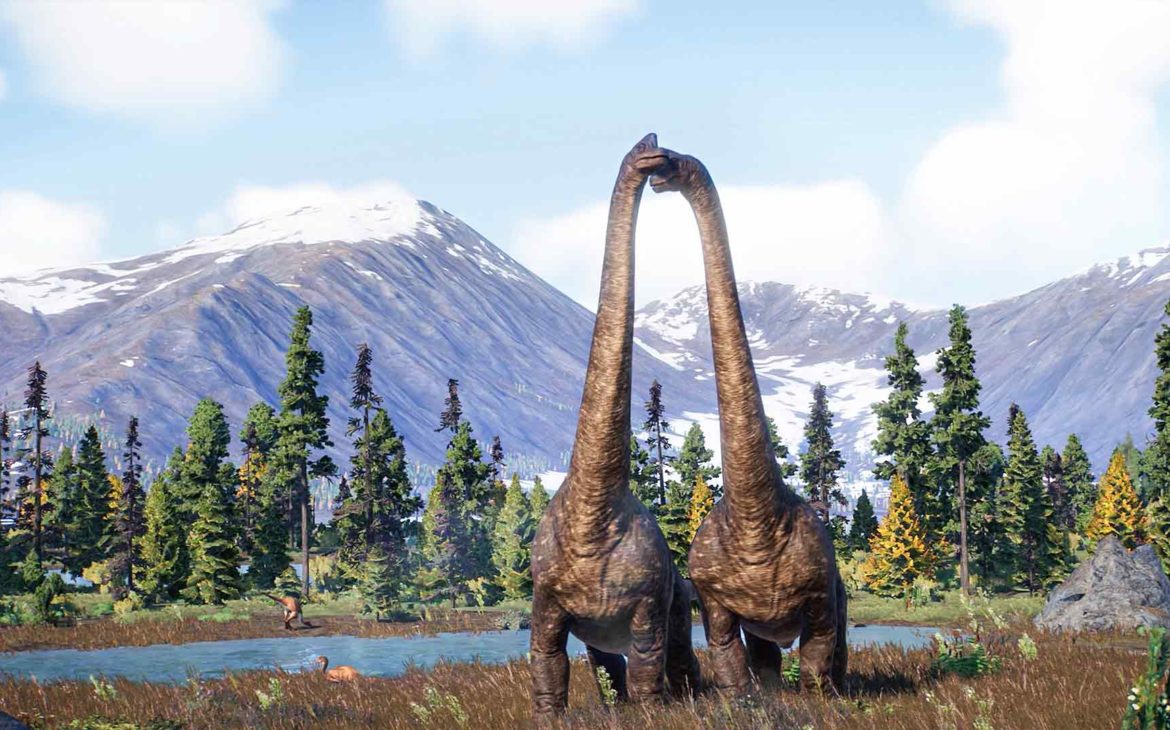
Welcome To Jurassic Park
Unlike Ian Malcolm deftly expressing “that’s one big pile of shit”, Jurassic World Evolution 2 looks thoroughly brilliant. Dinosaur models are detailed and impressively crafted, all manner of landscaping tools allow you to develop visually gorgeous enclosures with varieties of foliage, ground texturing and water options. Animations for the reptiles are smooth, varied and impressive, there’s just nothing quite like seeing a T-Rex face off with an Indominus Rex as they bash, claw and bite at each other with relentless fury. Park structures are unique and the new avary or lagoon enclosures are strangely pleasing to view.
There are a couple of gripes: maps are again largely repeats of the previous game’s, texture and object pop-in are severely noticeable from minor changes to zoom when scouring over the map and I had a couple instances of dinosaurs just straight-up teleporting out of their enclosures. There was one freeze which caused a hard reset of my PS5 too, but fortunately the auto-save rescued my progress there.
Again, what’s here looks great, even despite the minor issues, but I consistently noticed how familiar it all was from Evolution 1. Most of these assets, menu graphics, designs and aesthetic tools are rehashed or straight up the same from the original, which had me asking that same question of how much of a “sequel” this really is. I can’t necessarily blame the developers for not changing what works, but equally it just felt that I’d seen much of this for dozens of hours prior to playing Evolution 2, which doesn’t help to keep the experience fresh.
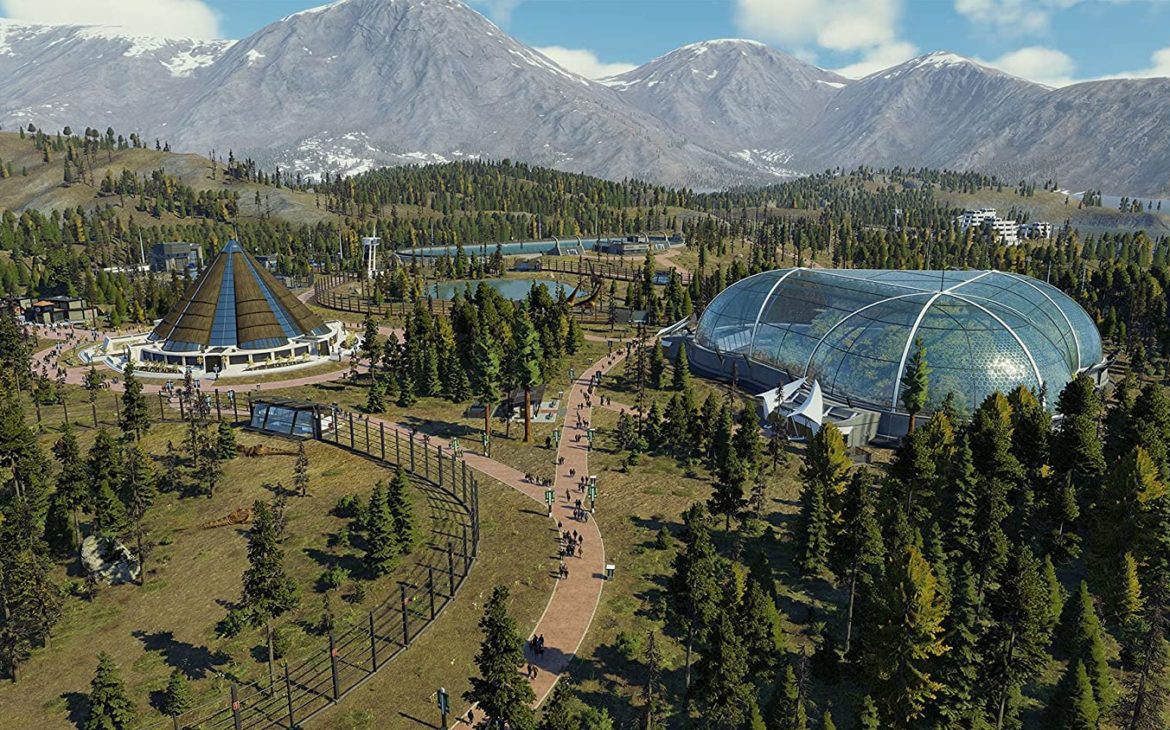
Change Is Like Death
Which, I suppose, acts as a microcosm for my perspective of Jurassic World Evolution 2. I love the Hell out of its gameplay, look, systems and how it satisfies that inner child who’s always wanted to create their dream dinosaur park. But I’ve done this before, for dozens of hours in fact, in the original. The new additions, minimal though they are, are fantastic and provide another layer of fulfilling that fantasy. Truly though, are they enough to justify this being a whole new game? I’m not completely certain.
Put simply, if you’ve played Jurassic World Evolution and you’ve had nothing but the itch for more, Evolution 2 won’t disappoint. I’d recommend playing the original first before jumping into this one too, as the sequel almost expects you to know a lot of the basics going in. Yet, it simultaneously feels more like an expansion of the first, the best version of it I guess, which would give the impression you only really need this one, it’s a strange place where it sits. As a management sim it has some flaws but a deeply addictive loop, but it won’t win over any new fans who weren’t convinced from the first outing.
I can’t wait to spend more time in Jurassic World Evolution 2 and I’m sure I’ll be sinking many more hours into it as I chase full completion and the platinum trophy, but I’m not convinced every returning fan will be as pleased with the light offering of new content.
Building on the immense foundations of the original, Jurassic World Evolution 2 provides more of the same addictive management gameplay with the thrill of seeing the prehistoric reptiles in all their glory. The new additions are light and there’s still some minor issues, but it’s all forgotten as you behold a T-Rex emerging from the shadows for the first time.

Jurassic World Evolution 2 is available now on PlayStation 5 (review platform), PlayStation 4, Xbox One, Xbox Series S|X and PC.
Developer: Frontier Developments
Publisher: Frontier Developments / Sold Out
Disclaimer: In order to complete this review, we were provided with a promotional copy of the game. For our full review policy, please go here.
If you enjoyed this article or any more of our content, please consider our Patreon.
Make sure to follow Finger Guns on our social channels –Twitter, Facebook, Twitch, Spotify or Apple Podcasts – to keep up to date on our news, reviews and features.
